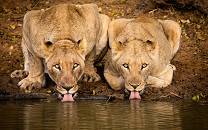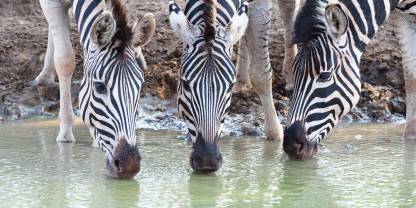uMkhuze is one of South Africa’s little gems. It is seldom visited by overseas visitors, but popular with local birders and photographers. Several photographic shelters give close-up viewing opportunities of a wide variety of animals coming to drink in the dry winter months. Although not a typical Big Five reserve, all of these sought-after animals are present.

-
Best Time To Go
- May to September (Dry season)
-
High Season
- None (Busy during South African school holidays)
-
Size
- 400km² / 154mi²
-
Altitude
-
26-350m /85-1,148ft
 View Photos
View Photos
 View Photos
+24
Photos
View Photos
+24
Photos
 Open Map
Open Map
Pros & Cons
- Good wildlife viewing
- Three excellent wildlife shelters
- Renowned birding destination
- Good facilities and roads catering to self-drive visitors
- Reasonably priced rest camp
- The wildlife shelters get very busy during school holidays
- Big cat sightings are rare
Wildlife
uMkhuze offers great wildlife viewing and is home to the Big Five. Both rhino species are present, and white rhino sightings are very common. There is a constant stream of animals drinking at the waterholes in front of the wildlife shelters. These include large numbers of zebra, blue wildebeest, warthog and nyala. Chacma baboons often put up a show as well.
More about uMkhuze’s wildlifeScenery
uMkhuze is part of the wetland system that makes up iSimangaliso Wetland Park. The uMkhuze River meanders along the reserve's borders with big fig trees covering the banks. A rare type of sand forest occurs in the reserve and is home to many special birds. Nhlonhlela and Nsumo are two scenic pans surrounded by yellow fever trees.
Weather & Climate
Summer in uMkhuze (October to April) is strikingly hot and humid, and thunderstorms blow in many afternoons. The hottest period involves the months around the start of the year. Winter (May to September) sees almost no rain and is much milder.
More about the weather and climateBest Time To Visit
The best time to visit is in the dry winter months (May to September), when clear skies and processions of wildlife at waterholes can be expected. The Wet season (October to April tends to be very hot and animals can be hard to spot as they disperse in the lush vegetation.
More about the best time to visit
